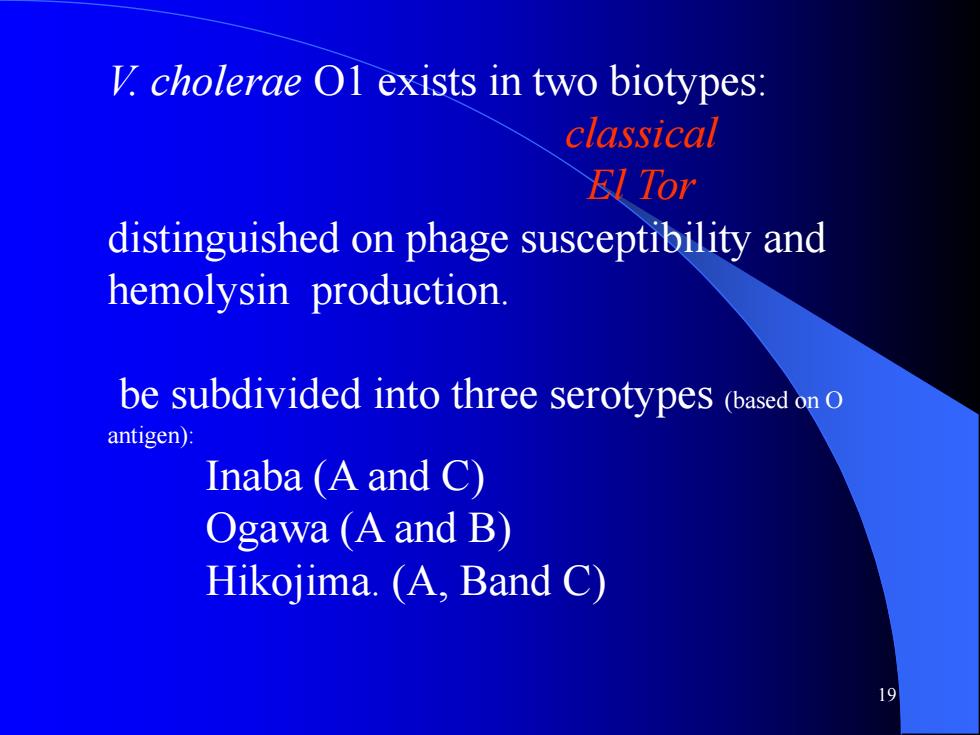
surface water organisms distributed in all parts of the world. favoring salty water interfaces Capsule -Cell membrane DNA Pilus Nucleoid Cytoplasm Ribosome Plasmic Flagellum 16
16 surface water organisms distributed in all parts of the world, favoring salty water interfaces

The antigenic structure of V.cholerae is similar to that of other members of the family Enterobacteriaceae, flagellar H antigen and a somatic(Lipopolysaccharide,LPS)O antigen. The former does not distinguish between pathogenic Vibrio and other nonpathogenic members of the family, Cell membrane DNA Pilus 一Nucleoid -Cytoplasm Ribosom Flagellum 17
17 V.cholerae is

but the O antigen does allow the differentiation.Only V.cholerae carrying the somatic antigens 01 or 0139 are associated with cholera. Capsule -Cell membrane DNA Pilus Cytoplasm Ribo 18
18

V.cholerae O1 exists in two biotypes: classical El Tor distinguished on phage susceptibility and hemolysin production. be subdivided into three serotypes (based ono antigen): Inaba (A and C) Ogawa (A and B) Hikojima.(A,Band C) 19
19 V. cholerae O1 exists in two biotypes: classical El Tor distinguished on phage susceptibility and hemolysin production. be subdivided into three serotypes (based on O antigen): Inaba (A and C) Ogawa (A and B) Hikojima. (A, Band C)

In sum two biotypes: classical and El Tor three serotypes: Inaba:O antigens:A and C Ogawa:O antigens:A and B Hikojima:O antigens:A ,B and C 20
20 In sum two biotypes: classical and El Tor three serotypes: Inaba: O antigens: A and C Ogawa: O antigens: A and B Hikojima: O antigens: A ,B and C